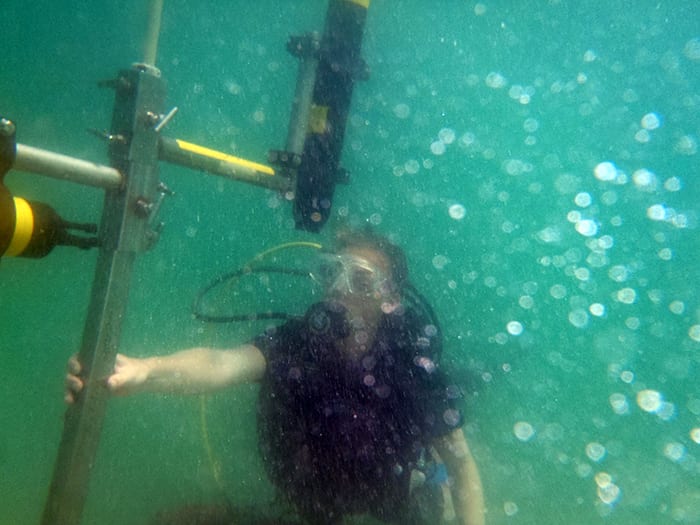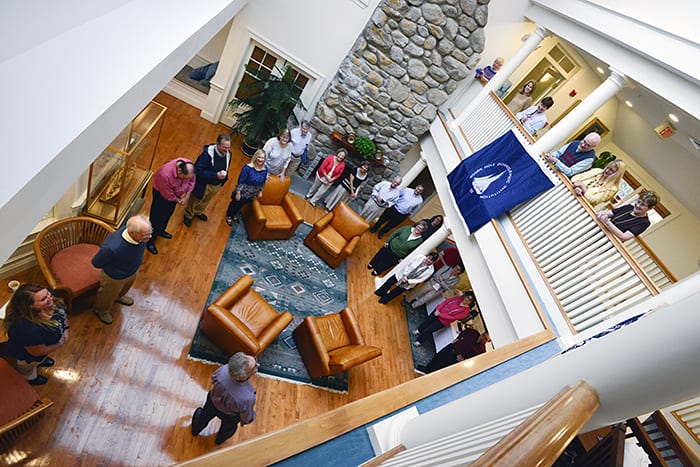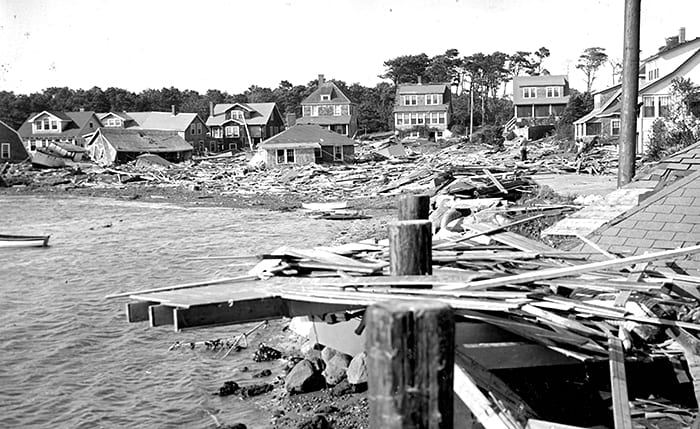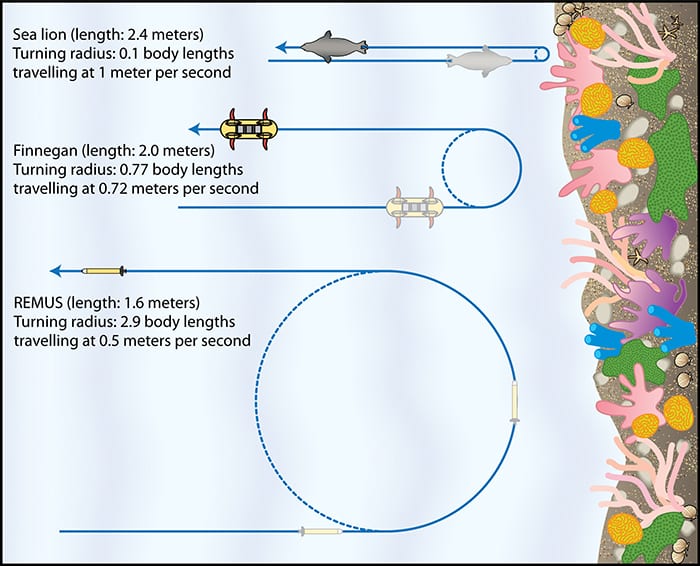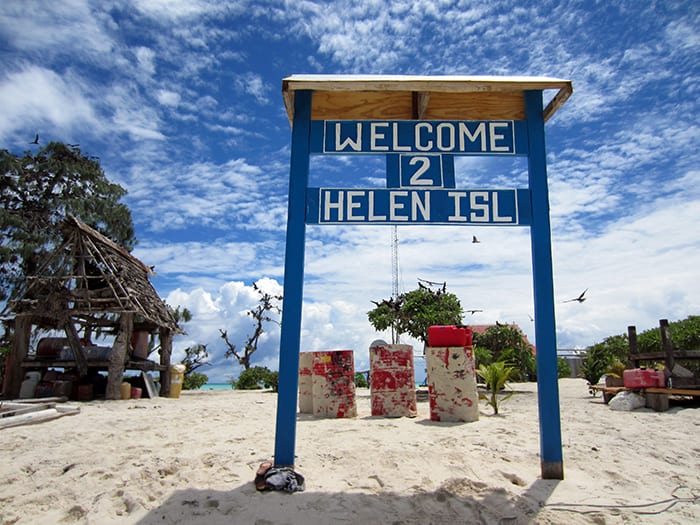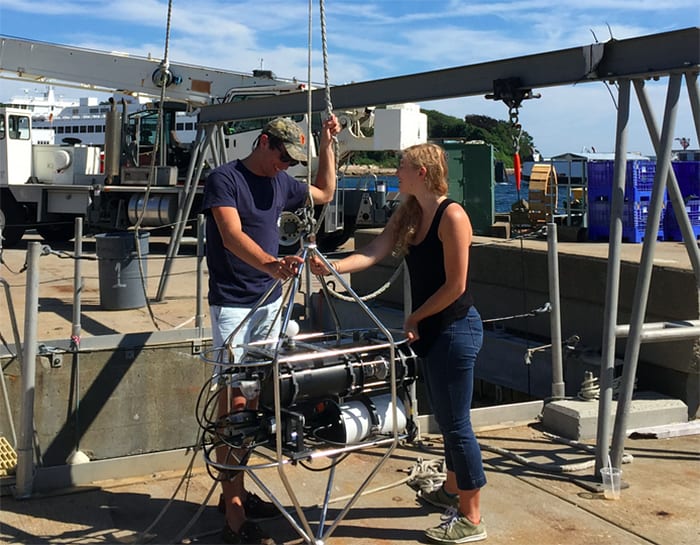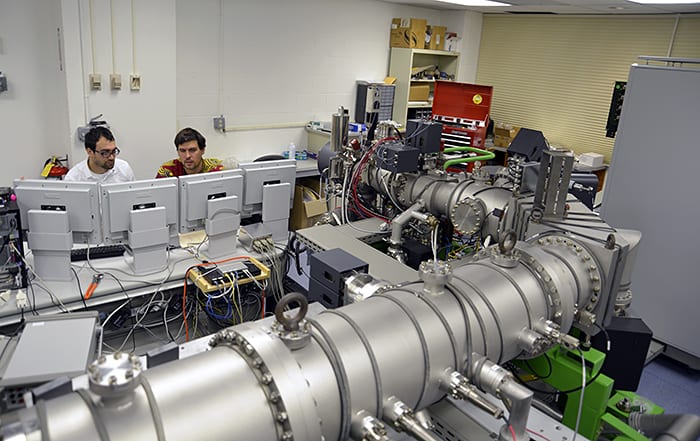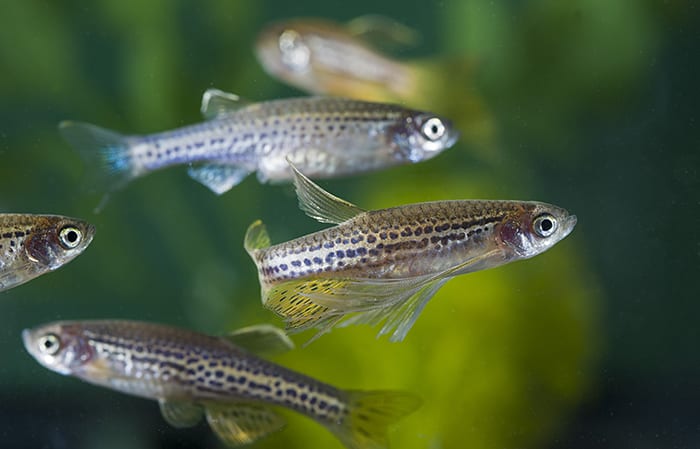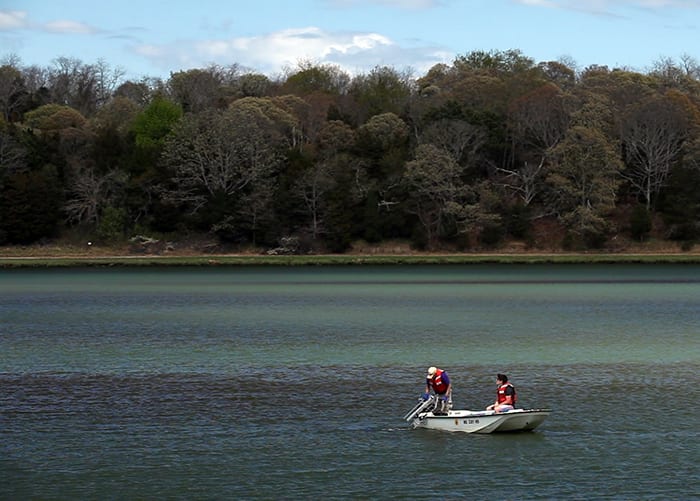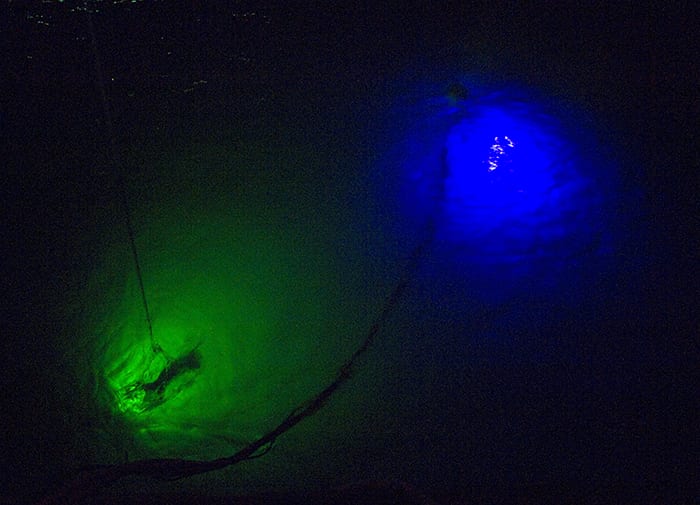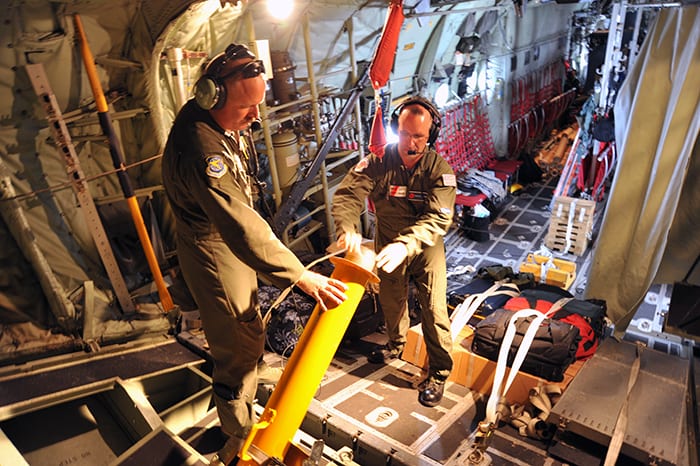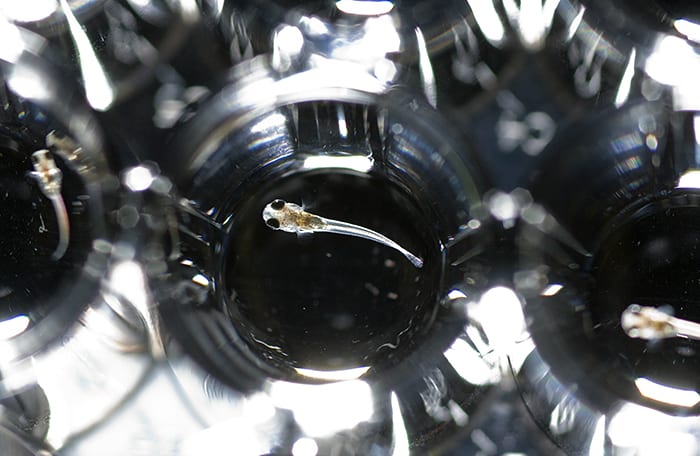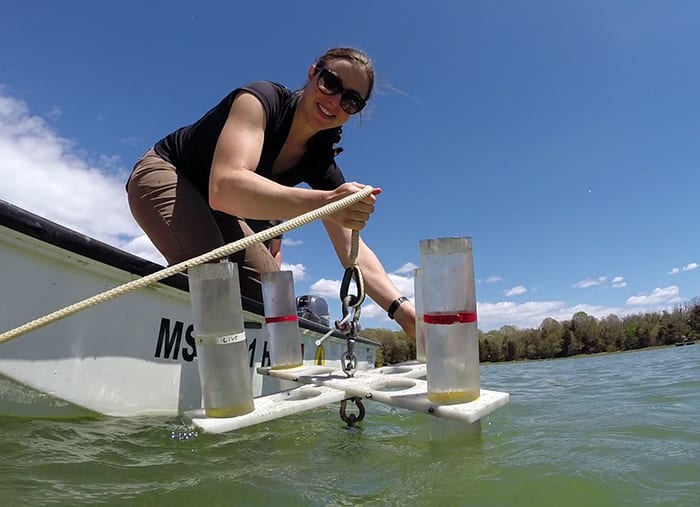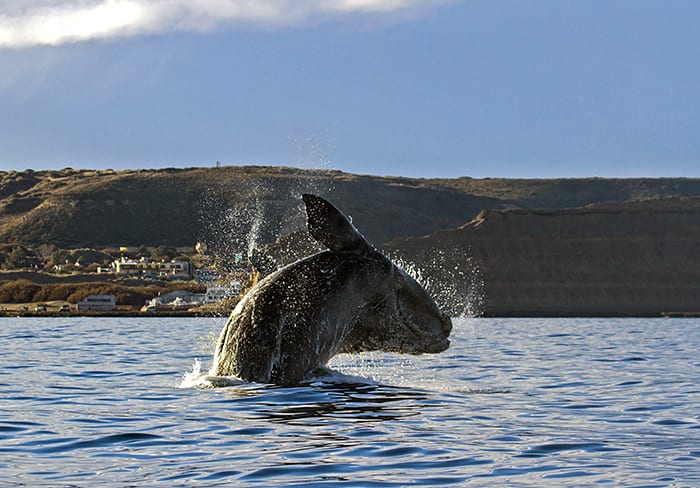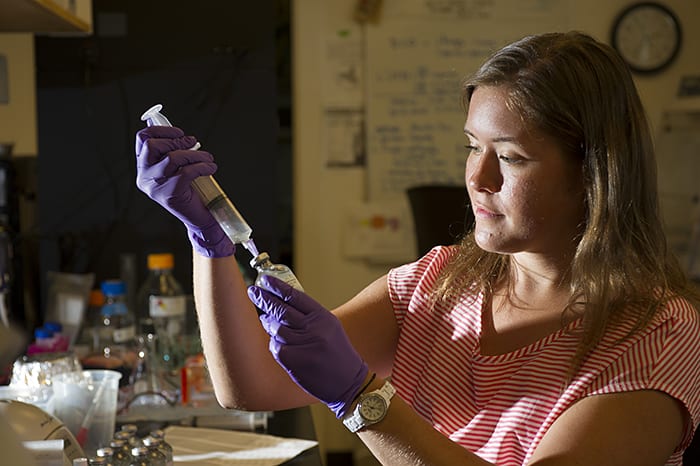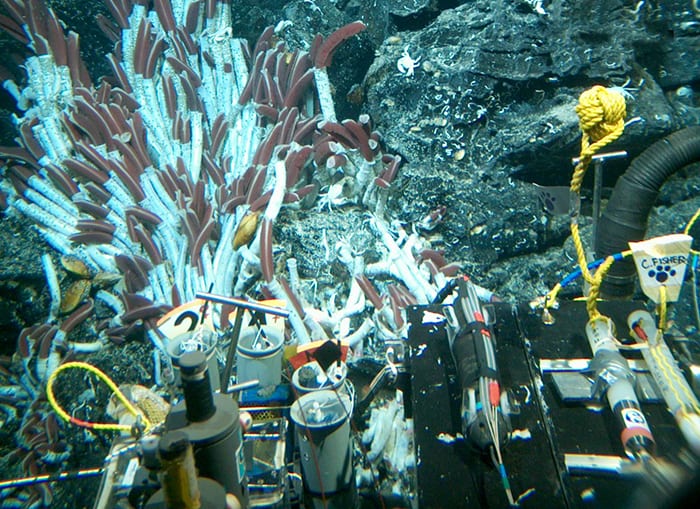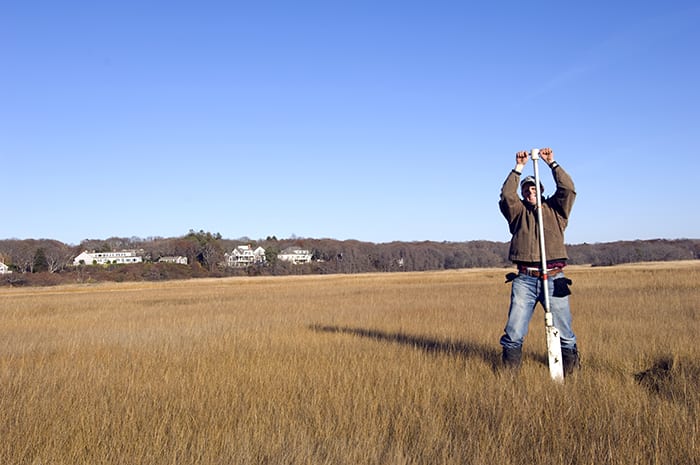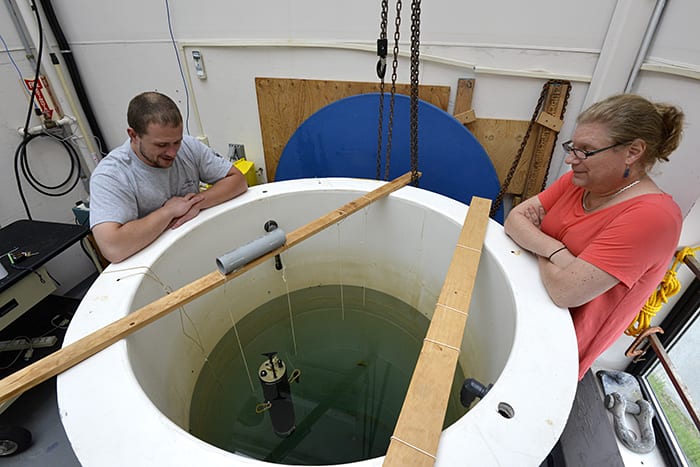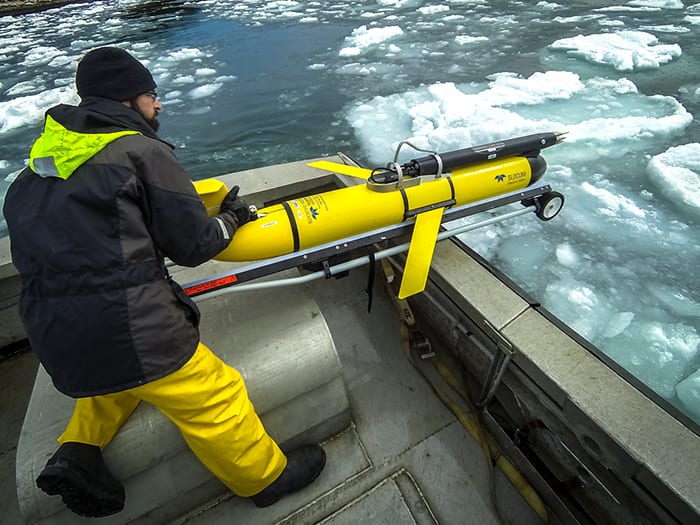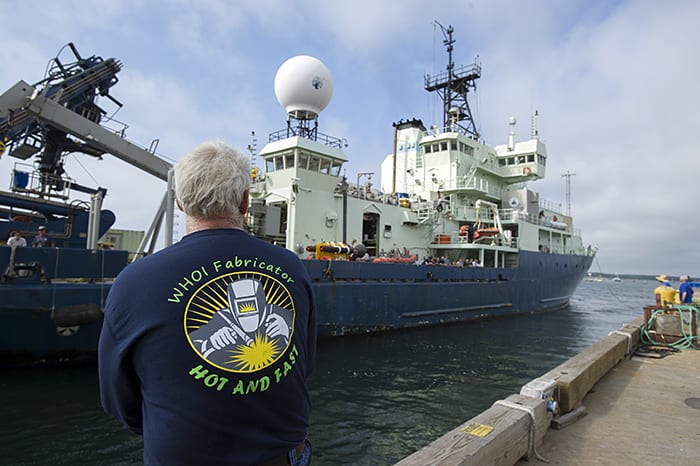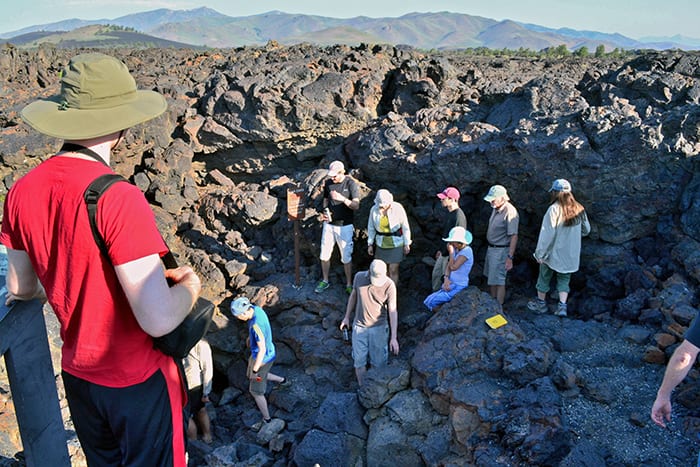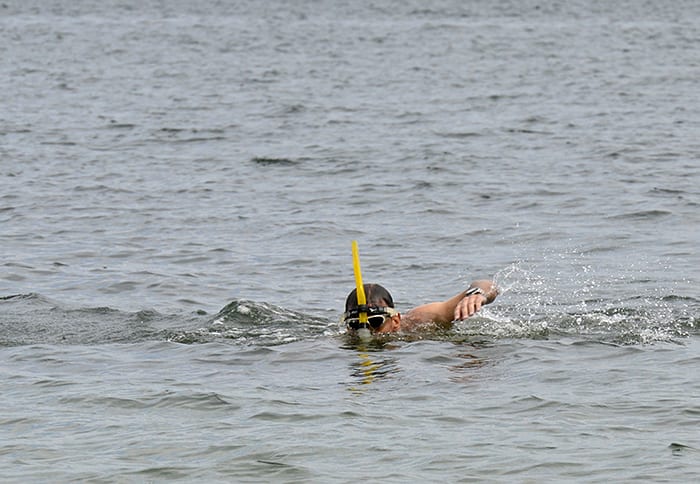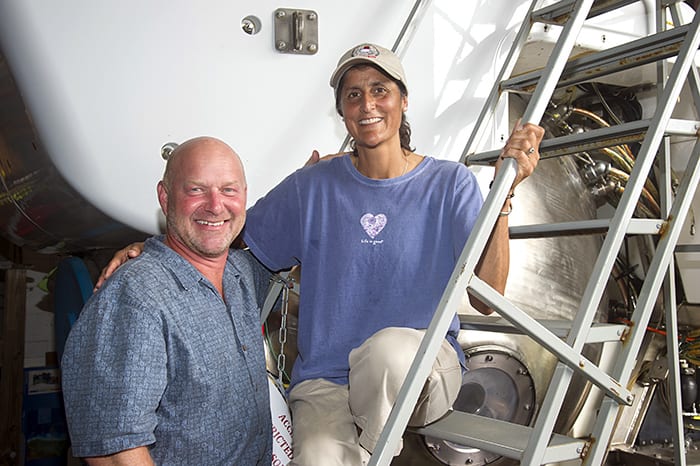Multimedia Items
Diving into Her Work
MIT-WHOI Joint Program graduate student Melissa Moulton and colleagues in the PV Lab at WHOI undertook an unprecedented study to learn how, when, and where potentially dangerous rip currents form on…
Read MoreWarm Welcome
Mark Abbott, the tenth President and Director of WHOI, arrived at the Institution for his first official day on Thursday, October 1, to a welcoming committee of his new co-workers…
Read MoreA Storm’s Wrath
In September 1938 ,a hurricane struck New England with little warning, bringing wind gusts to 186 mph. The intense storm killed hundreds and devastated Cape Cod, including Silver Beach in…
Read MoreCopy Cat
Turtles, dolphins, and seals are masters at maneuvering in the water. So it’s no surprise that vehicle deisgners occasionally look to them for inspiration when trying to make new generations…
Read MoreWay-Out Reef
Researchers in WHOI scientist Anne Cohen’s lab are investigating potential impacts on corals from changing ocean conditions, including warmer and more acidic seawater. As part of the work, Hannah Barkley,…
Read MoreCamera Ready
David Owen adjusted an early 70mm deep sea camera in the summer of 1959 aboard the sailing ketch R/V Atlantis, WHOI’s original research vessel built solely for marine science. Owen…
Read MoreSummer Homework
WHOI summer guest students Gabriel Roy Liguori and Fiona Hopewell assisted in a test deployment of a new instrument designed to make measurements of photosynthesis and respiration, the basic currency…
Read MoreOld As Water
MIT-WHOI Joint Program graduate student Adam Sarafian (left) and geologist Horst Marschall test samples of meteorites in the Northeast National Ion Microprobe Facility. Last year, the pair published a paper…
Read MoreZ is for Zebrafish
Zebrafish share almost 70 percent of genes with humans, so they are ideal models to study genetics of human development and disease. In addition, they are easy to maintain and…
Read MoreSeeing Red
Dave Kulis and Liann Correia, research assistants in the lab of biologist Don Anderson, retrieve a CTD—an instrument that measures conductivity, temperature, and depth—from Salt Pond, part of the Cape Cod…
Read MoreLight in the Ocean
A difficult problem in oceanography is how to communicate underwater. Generally, information flows to and from underwater instruments through cables, or as low bandwidth acoustic signals through the water. WHOI…
Read MoreLoading Alamo
Aboard a U.S. Air Force “Hurricane Hunter” airplane at 5,000 feet, WHOI scientist Steve Jayne (right) and Chief Master Sergeant Mike McDonald load an ALAMO (Air-launched Autonomous Micro Observer) profiling…
Read MoreFish-Eye View
A newly-hatched kilifish sits in a glass dish in the laboratory of WHOI biologist Ann Tarrant. These small fish are common in salt marshes and tidal creeks and live in…
Read MoreCasting for Cysts
Alexis Fischer, a PhD candidate in the MIT-WHOI Joint Program, deploys a sediment trap in Salt Pond, a part of the Cape Cod National Seashore’s Nauset Marsh system. She monitors…
Read MoreOf Ocean and People
Stephanie Stefanski, a PhD student in marine resource economics at Duke University, took this stunning photograph of a breaching southern right whale during fieldwork at the Peninsula Valdes World Heritage…
Read MoreNatural Filters
Oysters are filter feeders that dine on free-living algae called phytoplankton by sucking in water over their gills. In the process, they also improve water quality by removing particles that contain…
Read MoreLife in the Shade
This picture of tubeworms was taken in the East Pacific Rise at a depth of 8,200 feet (2,500 meters) from the human occupied vehicle Alvin. Since the discovery of hydrothermal…
Read MoreFinding History
Columns of sediment known as cores taken from coastal ponds and marshes reveal layers of sand, silt, and other material deposited over the years, including during extreme storms and hurricanes . These…
Read MoreWatching and Waiting
Alex Ekholm and Pelle Robbins test the programming of a newly developed ALAMO (Air-launched Autonomous Micro Observer) profiling float in a test tank at WHOI. The floats are designed to be…
Read MoreCold Feat
Gliders are autonomous underwater vehicles that change pitch and buoyancy to generate forward motion, and carry instruments that gather data on physical, chemical or biological properties of the water. Their…
Read MoreHot and Fast
WHOI senior welder/fabricator Anthony DeLane watches R/V Atlantis backing into the dock. Fabricators work with WHOI scientists and engineers to construct the physical frameworks for instruments, including moorings, buoys, and prototypes of…
Read MoreLava Trail
WHOI graduate students and scientist explored a lava tube, a cave-like geological feature that channels lava away from eruption sites, during a field trip to Idaho’s Craters of the Moon…
Read MoreScience Practice
Long-distance swimmer Ben Lecomte visited WHOI in July to prepare for his attempt to swim across the Pacific Ocean later in 2015. He was here to learn how to collect…
Read MoreReunion on Dry Land
In 2007, WHOI marine biologist Tim Shank, diving in the submersible Alvin, made a call to NASA astronaut Sunita “Suni” Williams while she was orbiting the Earth in the International Space…
Read More
